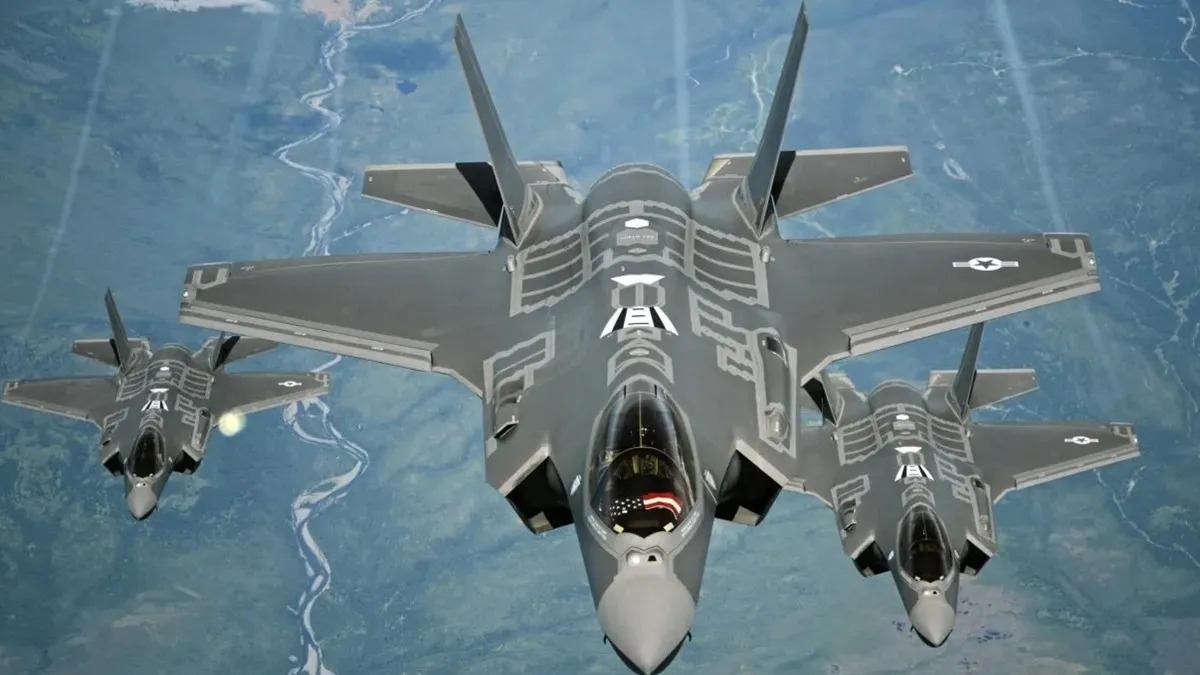Table of Contents
In a shocking development that has sparked global attention, Iranian state media claimed to have shot down three Israeli F-35I “Adir” stealth fighter jets and captured a female Israeli pilot. These allegations surfaced amid heightened military conflict between Israel and Iran in June 2025. However, Israel Defense Forces (IDF) have categorically denied the claim, calling it “fabricated.” So, what’s the truth behind the sensational headlines?
Iran’s Claims: Three F-35 Jets Shot Down, Female Pilot Captured
According to IRNA and Tasnim News Agency, Iran’s military:
-
Shot down two F-35 jets on June 13, 2025.
-
Destroyed a third jet on June 14, reportedly capturing a female Israeli pilot.
-
Claimed these stealth jets were involved in airstrikes on Iranian military and nuclear installations.
-
Added that its air defense systems also targeted and destroyed drones during the operation.
These claims, if true, would mark the first ever confirmed loss of F-35 jets in active combat, dealing a major blow to Israel and its US-made stealth fleet.
Israel Denies the Reports
The Israel Defense Forces (IDF) responded swiftly:
-
IDF spokesperson Avichay Adraee dismissed Iran’s reports as “completely false and fabricated.”
-
The IDF emphasized that none of its aircraft were lost, and no pilots were captured.
-
In fact, Israel claimed to have achieved complete air superiority, successfully executing “Operation Rising Lion”, which included strikes on Iran’s air defenses and key infrastructure.
Despite these statements, no independent body has yet confirmed or refuted either side’s version conclusively.
What Makes the F-35 So Hard to Shoot Down?
The F-35 Lightning II, developed by Lockheed Martin, is considered the most advanced multirole stealth fighter jet in the world. Some of its key features include:
| Feature | Description |
|---|---|
| Stealth Technology | Near-invisibility to radar with low radar cross-section (RCS) design |
| Sensor Fusion | Integrates data from multiple sources for 360° situational awareness |
| Electronic Warfare Systems | Can jam enemy radar, spoof missiles, and conduct cyber attacks |
| Long-Range Missions | Refueled mid-air and capable of deep-penetration strikes |
| Precision Strike Capability | Uses GPS-guided smart bombs and air-to-ground missiles with pinpoint accuracy |
For a country to shoot down this aircraft, it would need:
-
High-frequency radar systems that can detect stealth jets.
-
Multi-spectrum tracking systems (infrared, passive radar, signal triangulation).
-
Precise timing and coordination to exploit vulnerabilities like open weapon bays or engine heat signatures.
Is It Technically Possible for Iran to Shoot Down an F-35?
Iran operates Russian-made S-300 air defense systems and claims to have domestically produced advanced systems like the Bavar-373, modeled after the Russian S-400. But:
-
These systems, while modern, have never been tested against F-35s in combat.
-
The F-35 is designed specifically to evade detection by these systems.
-
Iran has not released any verifiable evidence—photos, videos, or radar logs—to prove its claims.
Unless Iran has developed new radar technology or employed an ingenious tactic, as seen during the 1999 shootdown of a US F-117A by Yugoslav forces, experts believe the claim is highly questionable.
Historical Precedent: The 1999 F-117A Stealth Jet Shootdown
In March 1999, during the NATO campaign in Yugoslavia, a US Air Force F-117A Nighthawk stealth jet was shot down using a Soviet-era SA-3 Goa missile. The Yugoslav commander used:
-
Short bursts of radar to avoid being detected.
-
Predicted flight paths of the stealth jet.
-
The timing when the jet opened its weapons bay, which briefly increased its radar signature.
This remains the only confirmed case of a stealth jet being shot down, and it involved a much older stealth aircraft than the F-35.
Independent Verification: What Global Experts Are Saying
-
Military analysts and OSINT (Open-Source Intelligence) trackers have yet to confirm Iran’s claim.
-
Alleged images of F-35 wreckage shared on Iranian channels were found to be old or digitally altered.
-
No satellite imagery has emerged showing crash sites, which would likely be visible due to debris and fire signatures.
Until such evidence is presented, global defense experts remain highly skeptical.
The Bigger Picture: Propaganda or Power Shift?
This controversy reflects the high-stakes information warfare in modern military conflicts:
-
Iran’s motives: Boost national morale, retaliate against Israeli attacks, project strength.
-
Israel’s motives: Maintain air dominance image, secure regional support, protect high-tech defense credibility.
-
The truth likely lies somewhere in between, but as of now, Iran’s claims remain unverified.
Conclusion
As of June 2025, there is no concrete evidence that Iran has shot down even one Israeli F-35, let alone three. The IDF denies the reports, and independent sources have not confirmed any aircraft loss.
Until photos, videos, or satellite confirmations emerge, the claim appears to be part of Iran’s psychological warfare strategy. However, it does raise important questions about the evolving nature of aerial warfare, where even the most advanced aircraft may face unforeseen threats.


 Rethinking Urban Planning in India | Tra...
Rethinking Urban Planning in India | Tra...
 Early Warning Systems in the Himalayas: ...
Early Warning Systems in the Himalayas: ...
 150 Years of Vande Mataram: Celebrating ...
150 Years of Vande Mataram: Celebrating ...




















